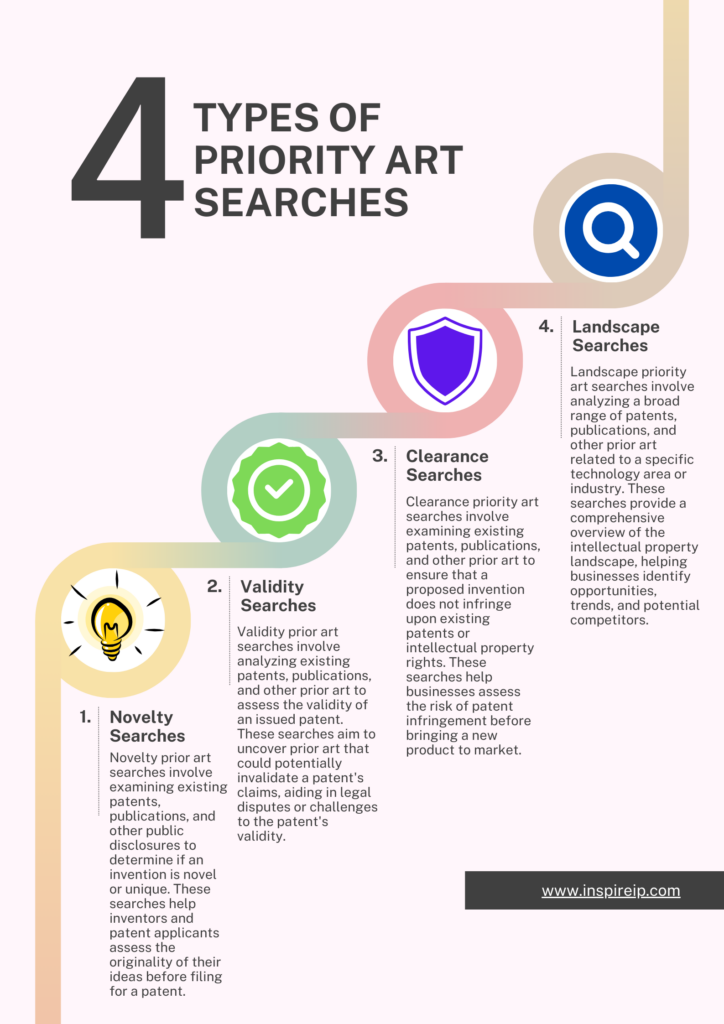You wouldn’t be much surprised to learn that industry leaders, innovation managers, and many other stakeholders do not clearly understand Prior Art Search, the process behind it, and the actual benefits it presents.
Why? Because it is generally considered to be the purview of legal teams, experts, and patent attorneys.
But that is the difference between innovation-savvy businesses and organizations that fail to look beyond the legalities of prior art searches.
A more hands-on approach to prior art search can instill an innovation culture that every individual (beyond R&D departments) can transition into their field expert. First, let’s get the basics out of the way.
What is Prior Art Search?
For the uninitiated, a prior art search is used to determine whether or not your idea or invention is new.
Think about the quirkiest, most absurd idea related to literally anything.
A bicycle-riding bird or a talking dog, don’t fret, just think, and whatever idea pops up, Google it.
You’ll find that, most likely, someone has already thought of your quirky idea and maybe even developed it and obtained a patent.
Prior art search goes miles further than just a simple search on Google or another search engine. It is about reviewing every publicly available evidence across global databases to gauge whether an invention is already known, patentable, or too obvious to be patentable.
How to do prior art search?
So, how do you determine prior art?
Traditionally, patent search was the job of a patent attorney. They were required to manually find existing inventions, patents, applications, and research applications.
However, gradual digitization has made the search for prior art relatively efficient and quick.
Oh, did you know USPTO recently announced a $70 million contract for an AI patent search tool to aid patent exams in assessing the stream of patent applications?
You can conduct a prior art search efficiently. Here’s how!
Step 1
Identify and determine the right keywords, search strings, or related phrases for your idea or invention. A search strategy for citation, keyword, name, or classification search will help you get relevant search results.
Step 2
Search in paid and free patent databases.
- Search engines (Google, Google Images, News, etc)
- Google Patents
- Prior art search, USPTO
- ChatGPT
- Leave it to the expert, the Patent Attorney
- In-house innovation management system powering AI-backed prior art search
- Patent public search tool
Step 3
Analyze the search results and prior arts, and shortlist them categorically based on relevance and similarity with the invention.
Step 4
Assess shortlisted prior arts, compare them, review them, and review their citations for discovering further results.
Step 5
Ensure your invention is not under the non-patentable category of inventions.
Step 6
Finally, evaluate the novelty of the invention based on the following patentability criteria:
- Novelty: Does your invention, design, or process meet the definition of invention? Is it different from other inventions?
- Inventive Step: Is it merely a theoretical idea, or it does have an inventive step? It must be non-obvious.
- Industrial Applicability: Does it have the ability to be used in industrial or commercial processes, i.e., its practical usefulness in real-world applications?
Thats it! You’re off to a great start. Now, all you have to do is draft invention disclosure with real-time collaboration between internal and external attorneys and other stakeholders, such as co-inventors.
Prior-art-validated invention disclosures lead to a stronger patent application and fewer Office actions to claim amendments.
Let’s review in detail the benefits of Prior Art Search.
Why prior art search is required beyond patent protection?
Did you know the US quotes award over $5 billion yearly in damages for patent infringement?
Imagine putting your creative efforts, time, resources, and whatnot into an invention. In the last, you only end up paying damages in the patent lawsuit.
This brings us to our most obvious yet fundamental benefit of a patentability search.
#1 Discover the novelty and patentability of the invention
Conducting the search prior to invention is now the only way to begin your patent journey.
It is common knowledge that the end-to-end process of getting a patent is costly and time-consuming. It stretches for years.
So, it is better and smarter to conduct the search before disclosing the invention.
Related Read: Don’t Buy Invention Disclosure Software Until You Review This
By looking for prior patents before the actual invention development process, you can make affirmative decisions on whether your invention will hold strong in front of the patent examiner.
It gives your product or design validation to move ahead.
#2 Truly understand the differentiating feature of the invention
When you are looking for existing inventions, patents, and knowledge, you get a clear view of your invention, too.
You can compare and dissect every feature and diverging branch of your invention. It helps you draft a strong invention disclosure and eventually a patent application.
Only a few months back, one of our team members finally got his patent granted. It was indeed a proud moment for us all.
When we received this news, everyone naturally wanted to know about the journey and if the overall experience with the examiner was as tedious as they say.
The inventor found the entire experience with the examiner insightful.
The examiner did a great job searching and helping understand the novelty of the filed patent. He provided clarity on what should be patented.
Eventually, the office’s actions enabled him to decide and go with the key feature of the patent.
What if you found that differentiating factor yourself?
Yes, you can make your patent life easier by ensuring that you are not drafting and filing an improperly written application.
Patent exams receive streams of submissions from inventors seeking protection for their creations.
You must stand out to streamline your patent application process. You can expedite your patent filing process surely but mainly it enables you to allocate budget adequately for the feature that must be developed further.
#3 Minimize the risk of rejection by the patent office
As discussed, prior art search equips you with the knowledge of invention novelty, inventability, patentability, and differentiation. Hence, you are capable of filing a patent claim that demonstrates relevant and apt, technical details, design, and process. You identify the scope of protection in your patent claim and streamline the process yourself.
#4 Sell your idea successfully to the potential licensee or your company stakeholder
Imagine you have an amazing idea, but you know there’s a prior art present out there.
Would you be able to submit your ideas successfully to the company?
Let’s say you do.
They like your idea, but they are hesitant since they won’t be able to patent it. Anyone can own the same product, they say.
However, if you have conducted a thorough prior art search, you are in for a treat.
By acknowledging the existing patent and demonstrating the point of difference between the two inventions, you will be able to sell your idea.
It’s very much possible that you can have a greater market value and that one differentiating quality makes your invention the better one.
#5 Cut down on R&D costs
Global expenditure of organizations investing in their R&D departments goes. It’s almost mandatory to identify relevant art early in the R&D process before investing immensely in an area. R&D departments without prior art search are forced to operate in an information vacuum.
#6 Find the inventive feature of your innovation
As you sift through the treasure trove of information during a prior art search, you stumble upon gems of wisdom and nuggets of inspiration.
You find yourself captivated by stories of inventors and visionaries who dared to dream big and change the world with their ideas.
But amidst the excitement of discovery, you also encounter obstacles and dead ends.
Sometimes, the path to innovation is like a maze, filled with twists and turns that leave you feeling lost and frustrated. But just when you’re about to give up, you stumble upon a clue a glimmer of hope that reignites your determination and propels you forward.
And then, finally, it happens.
You uncover the missing piece of the puzzle, the key to unlocking your creativity and turning your ideas into reality.
Once you’ve scoped out the scene, you start connecting the dots.
You see what everyone else is doing and then figure out how your idea stands out. Maybe it’s got a super cool feature that nobody else has thought of, or maybe it’s a mash-up of different concepts that turns into something totally fresh.
So, the prior art search is like your secret weapon. It helps you figure out what’s been done, what hasn’t, and where your innovation fits in.
#7 Find which jurisdiction to file
Prior art search enables you to scope out all the different jurisdictions where you could potentially file your patent.
Just like picking your travel destination, you want to pick the perfect spot that fits your invention interests and needs.
The prior art search is like doing a little research before booking your trip.
Then, you start digging deeper.
Searching what each jurisdiction has to offer, their rules, regulations, and how they handle patents. You’re able to gather information on different jurisdictions.
Once you’ve done your homework, you can make an informed decision. Maybe you find that one jurisdiction has more lenient patent laws, making it easier to get your patent approved.
Or maybe another jurisdiction offers better protection for your specific type of invention.
So, the prior art search helps you narrow down your options and pick the jurisdiction that’s the perfect fit for your patent application.
It’s like choosing the dream destination for your invention to call home a place where it’ll be safe, secure, and ready to take on the world!
P.S. You can also understand what might act as a prior art against your invention during patent review in a particular jurisdiction.
Related Read: Don’t Miss these Intellectual Property Management Tips to Build a Strong IP Portfolio
Bonus tips for innovators while performing Prior Art Search
- Analyse search results carefully, especially, while reviewing search engine results. It is common to get lost in aspirational or hypothetical results with no real basis for invention.
- Beware while using ChatGPT. It is a semantic response model and might not provide authentic results or provide fictional responses. You must be careful about the search terms you use as well to avoid disclosing your invention unintentionally.
- Remember, patent applications are not disclosed until 18 months after their priority date. There might exist a prior art there.
- If your invention/idea/design has changed after your initial search, ensure the search scope is still true to your new invention requirements.
- Prior arts do not only mean granted patents, but also published patent applications, with pages, articles, research, papers, books, videos, and so on.
- Remember, not every country across the world has its patent databases translated into English.
- It is better to connect the invention disclosure and prior art search process. It helps in seamless innovation flow in the company.
Talk with innovation success team: Free Innovation Management Guide
Related Read: 10 Reasons You Need Workplace Innovation Platforms in 2024 (Tools Included)
What are the types of prior art search?
Now that we’ve learned what prior art search includes and what is prior art search used for, let’s take a quick glance at the types of prior art.




